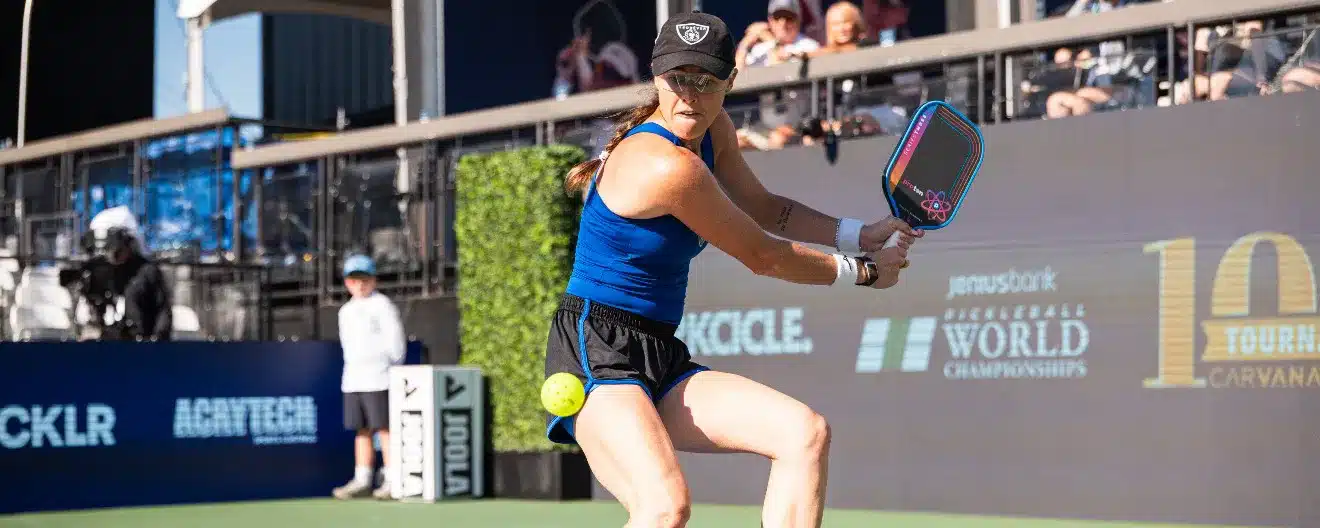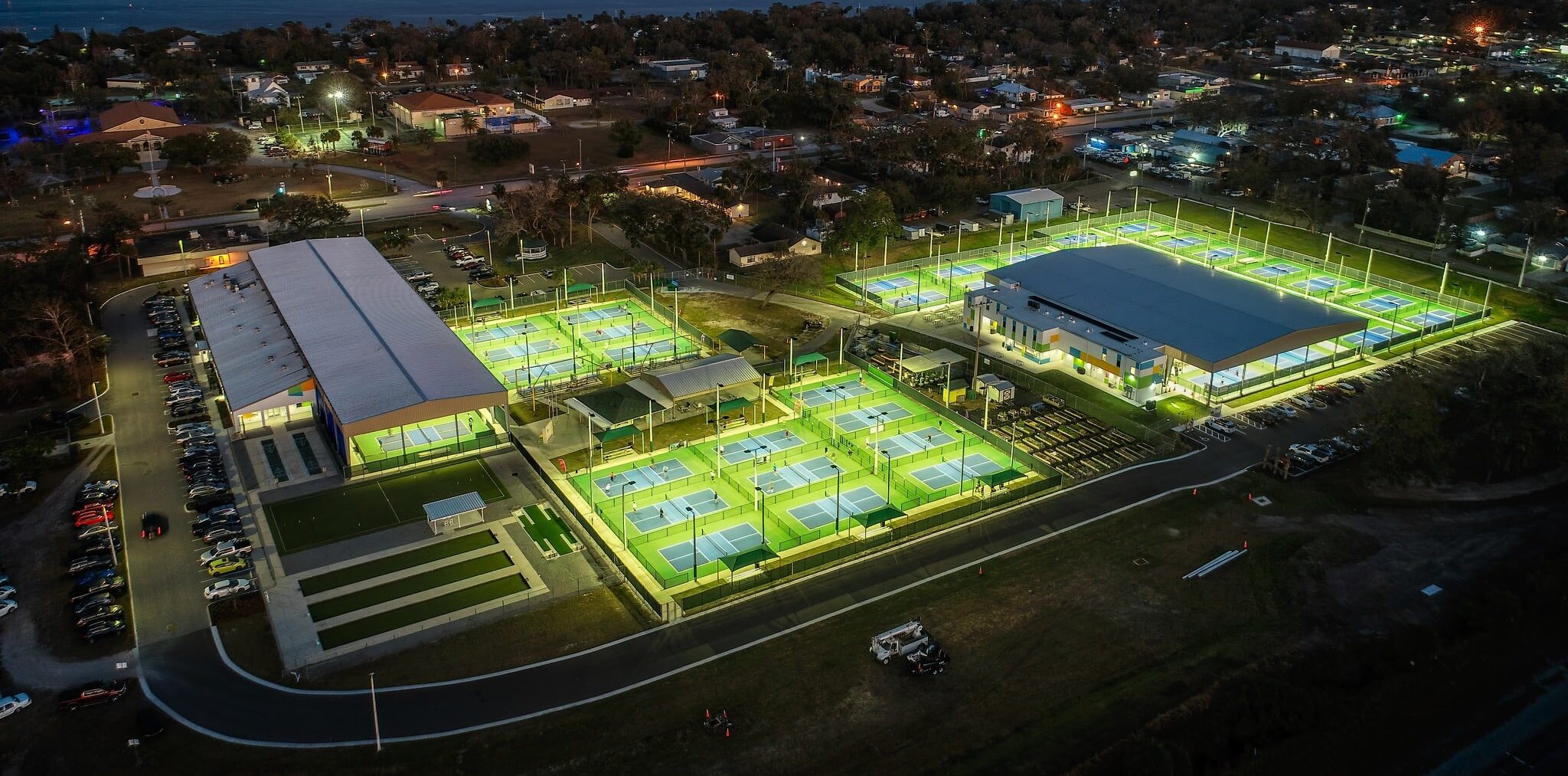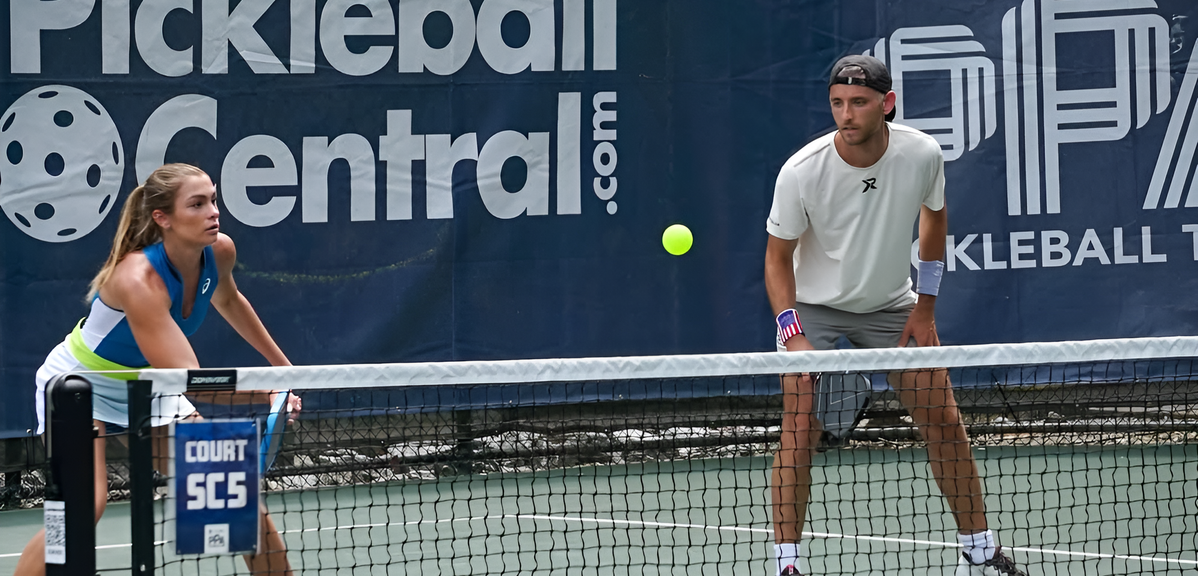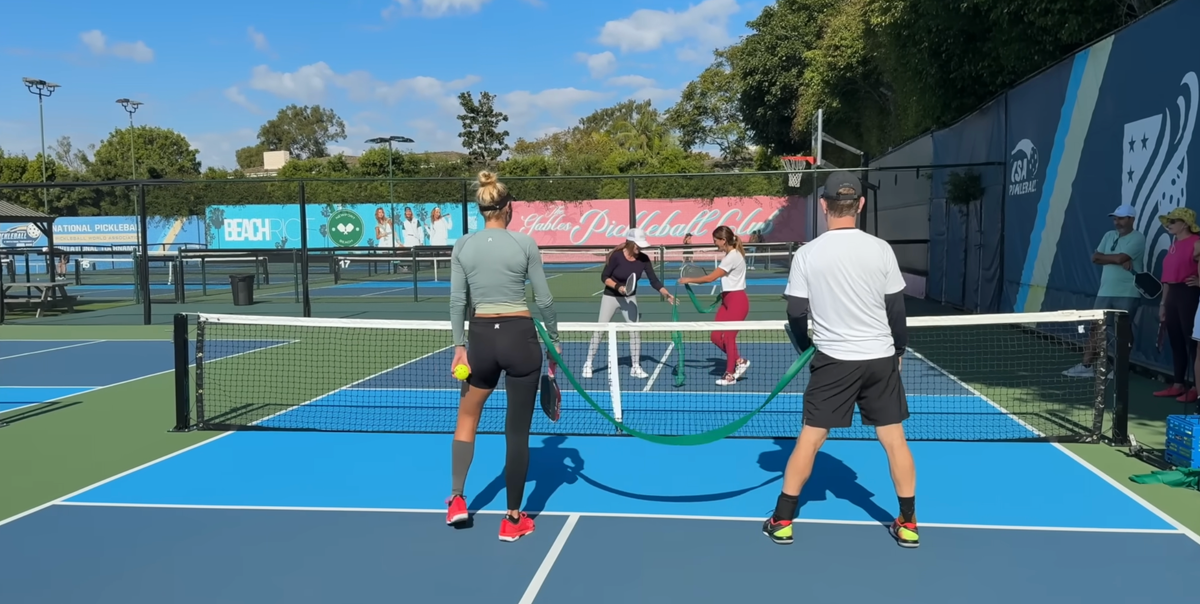Over the past three years, I’ve received well over a thousand questions and comments about the rules of pickleball. Throughout this time, I’ve gathered up a list of the most common questions and concerns that pop up in the pickleball world. What’s listed below are some common pickleball rules questions answered!
If you’re new to the game and you’d like a full rundown on the most common pickleball rules, you’ll definitely want to check out this article.
However, if you have a question you’re trying to find the answer to, you’ll most likely find it below.
How do you handle rules in a recreational play setting?
Some of the questions that pop up about pickleball have to do with niche rules that don’t come up very often. I’ve included some of them in this list but omitted a lot of them.
The reason is that some of the rules that would absolutely apply in a tournament setting, are applied much less often in a recreational play setting.
As an example, a common tournament rule that you see pop up often are rules surrounding incorrect receivers or servers. A referee will keep track of who the correct server or receiver is.
But in recreational play, no one typically cares and it’s not a big deal. You’ll be fine as long as you’re making a conscious effort to keep things within the rules.
So keep in mind that as we go throughout this list that some of the rules listed here may not be enforced in a recreational setting because most players, quite frankly, just don’t care.
What happens when the serve hits the net and goes over?
Where a ball can and cannot land is different for the serve compared to other shots in pickleball. But luckily, it’s pretty easy to understand.
If the ball hits the net on your serve, bounces over to your opponent’s court and lands in the service box, it’s what we call a “let”. This simply means that you get to serve again. This can happen an infinite amount of times.
Keep in mind that the service box includes the centerline, the baseline, and the sideline. But it does not include the kitchen line! Also, if it lands outside the service box of your opponent, then it would be a fault just like it would be if you hadn’t hit the net.
So the next question is: what happens if it does hit the kitchen or the kitchen line? As you’ve probably guessed, this is a fault. It doesn’t matter if the ball hits the net or not, the serve cannot land in the kitchen or hit the kitchen line.
 Any serve that hits the kitchen line or kitchen zone is a fault.
Any serve that hits the kitchen line or kitchen zone is a fault.What’s the rule on a double hit?
Double hits happen somewhat frequently in pickleball. They can be hilarious when done on accident, but the rules surrounding them can be confusing.
Here’s the rule: double hits are allowed in pickleball if they are done on accident and within one stroke that’s going in the same direction. Basically, it has to be done unintentionally. If you hit the ball, then change your stroke or do another stroke afterward, it’s also a fault.
How do line call rules work in pickleball?
Line calls are one of the most common areas of debate in pickleball. More arguments on the court surround this topic than anything else in the sport.
Here’s what you need to know. The physical material that the ball is made of has to touch the paint that the line is comprised of. Both of those elements have to touch in order for the ball to be considered in.
It doesn’t matter if the ball is hovering over the line or not while not touching the paint.
This is a huge topic that I have tons more info about here, but let me give you a shortlist.
- If a ball lands near one of your lines and it’s close, you have to call it in.
- Line calls must be made quickly after the ball lands.
- You only call shots that are on your side of the court.
- If you disagree with your opponent’s line call, you can ask them or the referee.
- If you call a shot out, but your partner calls it in, the call is in.
- If you express any kind of doubt about whether the ball is in or out, the call is automatically in.
Can you hit the ball with your hand?
In short, no. Let’s say that you drop your paddle and in your state of panic you smack the ball with your hand. Hilarious, to say the least, but it is a fault.
However, if you make an inaccurate swing and you end up hitting the ball with your hand while holding your paddle, then this is legal.
Imagine for a second that you’re holding your paddle and it’s pointing straight down to the ground. Any ball that hits at your wrist and below towards the end of your paddle is legal. But you have to be holding onto the paddle for this to be the case.
What are the rules on people’s behavior on the court?
I get a lot of questions about player behavior on the court. Although this is very rare to see, I have heard concerns about people taunting or saying other things before the person serves or hits the ball.
This opens things up into the wonderful world of distraction rules.
Again, this is extremely rare, but if someone is taunting you as an example, this is not a distraction and is perfectly legal. It’s crummy, but it’s legal. Keep in mind that if it goes overboard, a referee can intervene to award points to the team being insulted.
However, if you’re about to hit the ball and someone makes a loud noise or yells at you, then this is a distraction and a fault can be declared.
Remember that this does not include team communication. If someone yells something that’s clearly meant for team communication and you hit the ball into the net, this is not a distraction. Also, strange movement patterns or standing in certain places are not distractions.
Do you have to call the score before the serve?
Oh boy, this is one of my personal pet peeves. Technically yes, you do have to call the score before you serve. However, as I stated about with recreational rules, some people won’t or they talk so quietly that you can’t hear them.
This is why it’s a good idea to know what the score is at all times. If you’re a beginner, this will take some time to get used to. But it’s a useful thing to get good at.
If you’re playing in a tournament, you must wait until the referee calls the score in its entirety before beginning your service motion.
Can you use two paddles at the same time?
No, but that would be hilarious if you could!
You can’t use a paddle in each hand, however, you can switch hands. Some players who are ambidextrous will switch the paddle to the other hand to get a shot. I personally don’t recommend this, but it does work for some people.
What happens if a ball bounces on your side, then spins back over?
If a ball with a tremendous amount of spin bounces on your side of the court then bounces back over, the ball is still in play and you can still hit it. And yes, you can hit it even though it’s on the other side of the court.
You’re allowed to run towards the net and strike the ball. The most popular strategy with this is to hit it back into the net, which is legal.
Keep in mind though that if the ball bounces on their side of the court this is a fault since the first bounce happened on your side. As it goes over the net, you’ll need to hit it quickly.
Another rule to keep in mind here is the rule about the plane of the net. You cannot cross the plane of the net unless you’re going to hit the ball. If you ever decide for any reason that you need to cross to the other side, you better hit the ball or it’s a fault!
Can you have a pre-serve routine before you serve?
Yes, in fact, it’s encouraged! Pre-serve routines are extremely important because it gets your muscle memory and your body into the flow of the game. They give you confidence in your serve and most importantly, pre-serve routines keep you away from the yips!
You can do anything you want essentially. I’ve had a lot of pickleball players ask if you can bounce the ball with your hand and the answer is of course!
What does a dead ball mean?
To put it simply, a dead ball just means that the ball is no longer in play. Once a fault has been declared in any way either by a kitchen violation or the ball landing outside the court, the ball is immediately dead the instant the fault happens.
This means that whatever happens with the ball no longer matters. But keep in mind that this only applies to the ball itself, not any other rules. If a dead ball is declared, but you make a kitchen fault, the kitchen fault still applies!
What happens if you hit a ball that bounced out?
This goes along with the dead ball rule that we just talked about above. If the ball lands out of the court on your side, the ball is declared dead as soon as you make the line call. Once you yell “out” the ball is dead whether or not the call came before or after you hit the ball.
This is very important for you to understand because some players believe that you can’t hit a ball until after you’ve made the call. This isn’t true!
It’s OK to hit a ball after it bounced out, you just have to make the line call promptly afterward.
What happens if you hit an opponent with your serve?
It’s your point! I know this rule seems a bit crazy. But in general, if you ever get struck by a ball other than your wrist and below to the end of the paddle, it’s a fault.
It doesn’t matter if they were just minding their own business waiting for the serve to happen. If anyone on their team gets hit by the serve, it’s a point for you.
Can you hit a shot from outside the court around the net post?
Absolutely and these are some of the most fun shots to do in pickleball. These are what we call ATP shots which stands for “around the post”. I did a video about this that you can check out on my YouTube channel.
There are really no limits to hitting an ATP shot. The only rule that applies to these shots is the net post rule. In pickleball, you cannot hit the net post with a ball. This is illegal. Otherwise, hit those ATP shots as much as you want!
Can you be in the kitchen to dink a ball that has bounced?
This is a made-up rule that I hear on a regular basis. Some people think that you can’t be in the kitchen even to dink a ball. This is not true. Let me give you a rundown on how the kitchen rules work in pickleball.
- You cannot volley a ball while having been, are currently, or would be due to momentum in the kitchen. A volley is a shot that hasn’t bounced on the ground yet.
- The kitchen rule no longer applies if the ball has bounced.
- As we’ll talk about later, the kitchen is the physical ground on the floor, not the space above it.
This is all you need to understand the kitchen rules. If the ball has bounced, you can be in the kitchen all you want. The rule only applies if the ball hasn’t bounced.
Is it illegal for players to stand outside the court at the beginning of a point?
There is only one rule that governs where a player can stand and that is for the server. Everything else is fair game.
If you’re receiving the ball, you can stand anywhere you want. You can stand directly behind the net if you want to! But obviously I don’t recommend it. Furthermore, it doesn’t matter if you hit the ball while behind the baseline or not.
In pickleball, player positioning before a point starts doesn’t matter in terms of the rules. What matters is who is receiving or serving. Where you’re positioned (again, other than the server) doesn’t matter.
Can you spin the ball with your hand before hitting your serve?
There is no rule on how a server should toss the ball.
You can toss it high, low, with spin, without spin, or even not toss it at all. There are no rules in this regard, but I would not be surprised if we saw some in the future.
What happens if a ball hits the crossbar of a portable net?
This is a rule that can catch people off guard but will sometimes happen in recreational centers indoor with portable nets.
This rule is only applied based on the situation at hand. If you strike a ball and it hits the crossbar on your side of the net, then that’s a fault. This counts for any shot and includes the serve.
However, other than the serve, if your shot goes over and (most likely because of hitting the net) ends up trickling over and hitting the cross bar before or after it bounced or gets stuck in between the bar and the net, then it’s a let and the point must be replayed.
The reason it works this way is that the opponent had no chance of getting the ball since it wasn’t able to travel its full distance.
Can you hover your paddle over the kitchen?
Yes you can. This is a critical rule to understand because if you want to get good at pickleball, then you must learn how to take dinks out of the air above the kitchen.
Always remember, the kitchen is the physical ground, not the space above it. You can hover above the kitchen as much as you want!
What happens when you and your partner hit the ball at the same time?
Technically speaking, you and your partner most likely did not hit the ball at the same time. What most likely happened is that you hit paddles at the same time and whoever was in front ended up hitting the ball.
Regardless, this is perfectly legal.
Does scoring work differently in singles play?
For rules, there are only two things you need to understand when playing singles.
- You’re the only server and therefore the third number in the score is taken out.
- Where you serve is only based on your score.
The 2nd rule tends to mess people up a bit. Just look at it this way: when your score is even, you start serving on the right side of the court. When your score is odd, you start serving on the left side.
Is it illegal to intentionally hit players with a ball?
It is not illegal to intentionally hit players. However, if the referee deems so, a point can be awarded to the other team if a player is maliciously attempting to injure a player. This is all up to the referee though and typically making a call like this based on a shot is rarely going to happen.
And just to be clear, I’ve never seen or heard anything like this before.
It’s well understood in pickleball that getting hit by the ball is a normal part of the game. It happens. Players will intentionally try to hit near a certain part of a player. Some common areas are on the side of the waist or near the shoulder. Although players are very, very rarely trying to hit the person, sometimes inaccuracy peeks its ugly head and they hit the person.
It happens and is met with an apology. It’s a part of the game and it’s something that you have to get used to.
Does the receiver have to stand behind the baseline?
As I talked about earlier, no. The receiver does not have to be behind the baseline to receive the serve. This rule only applies to the server.
What happens if a ball breaks in the middle of a match?
If the pickleball breaks in the middle of a rally, you’re out of luck! The play continues until after the point has concluded.
I know that this can be annoying, but remember that your opponent is having to deal with the same problem!
Here are some common tricks that you should look out for
Unfortunately, people like to make up rules all the time. It’s sad, but it’s true. Believe me, I hear about them all the time! Be careful when someone says something about a rule that you’ve never heard of. It’s possible that they’re right, but sometimes they’re making something up because they don’t like to lose.
Make sure that you check out the USAPA rulebook which I’ve linked here. Get familiar with the rules so that you can debunk anything that pops up during play.
I hope this article as helpful for you! If you have any questions please feel free to leave s comment and I’ll try to respond as quickly as possible.
Anuncie Aqui / Advertise Here
Sua marca para o mundo Pickleball! / Your brand for the Pickleball world!

 English
English  Spanish
Spanish  Portuguese
Portuguese  German
German  Italian
Italian  Japanese
Japanese  French
French  Polish
Polish  Russian
Russian  Netherlands
Netherlands  Hungarian
Hungarian  Turkish
Turkish  Videos
Videos  Pickleball Kitchen
Pickleball Kitchen








 English (US) ·
English (US) ·  Portuguese (BR) ·
Portuguese (BR) ·